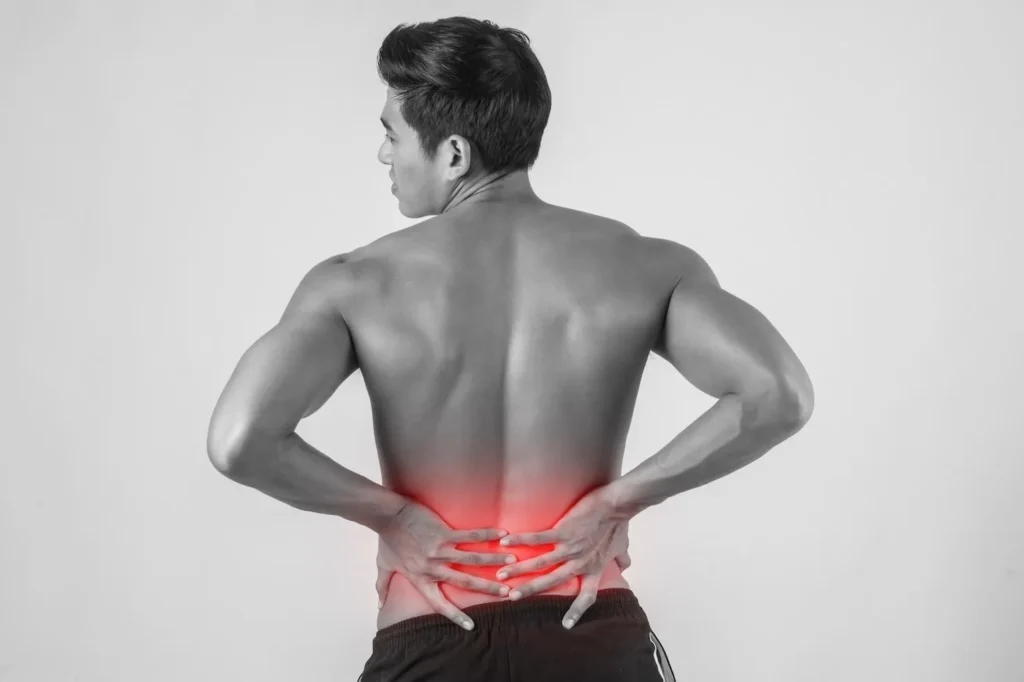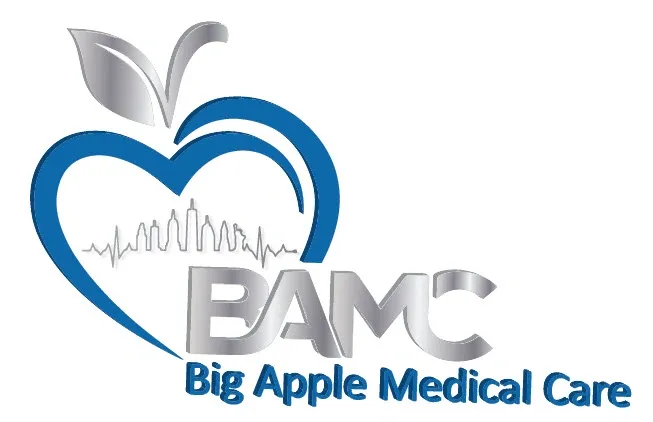Common Causes of Hip Pain: Hidden Problems You Should Know

Hip pain affects millions of adults, often disrupting daily activities and reducing quality of life. While many associate hip discomfort with aging or injury, numerous underlying conditions can trigger this pain without obvious external causes.
Understanding the hidden sources of hip pain is crucial for effective treatment and prevention of long-term complications. These overlooked culprits range from inflammatory conditions like bursitis to structural issues such as labral tears or femoroacetabular impingement, which may go undiagnosed for years while causing progressive damage.
Medical professionals at specialized clinics like Big Apple Medical Care offer comprehensive evaluations to identify these concealed causes of hip pain. Their team utilizes advanced diagnostic techniques to detect problems that standard examinations might miss, helping patients address the true source of their discomfort rather than merely treating symptoms.
Understanding Hip Pain: Anatomy and Key Functions
The hip joint is a remarkable structure designed for both stability and mobility, serving as the connection between the upper and lower body. Its complex anatomy enables a wide range of movements while supporting the body’s weight.
The Structure of the Hip Joint
The hip is a classic ball-and-socket joint where the rounded head of the femur (thigh bone) fits into the acetabulum, a cup-shaped socket in the pelvis. This design allows for fluid movement in multiple directions while maintaining stability.
The joint surfaces are covered with articular cartilage, a smooth, slippery tissue that cushions the bones and allows them to glide against each other with minimal friction. This cartilage is crucial for pain-free movement.
Surrounding the hip joint is a strong fibrous capsule lined with synovial membrane, which produces lubricating fluid. Additional stability comes from ligaments that connect the femur to the pelvis.
The labrum, a ring of cartilage around the socket rim, deepens the socket and creates a tight seal around the femoral head. This structure helps distribute pressure evenly across the joint.
How the Hip Functions in Everyday Movement
The hip joint enables six basic movement patterns: flexion, extension, abduction, adduction, and internal and external rotation. These movements allow us to walk, run, sit, and climb stairs.
Strong muscles surround the hip joint, including the gluteal muscles, hip flexors, and adductors. These muscles not only generate movement but also stabilize the joint during activity.
When walking, the hip bears forces equal to 1-3 times body weight. During running or jumping, these forces can increase to 5-7 times body weight, highlighting the joint’s remarkable strength.
The hip’s design balances mobility with stability. It permits a wide range of motion while maintaining the strength needed to transfer forces between the upper and lower body.
Proper hip function relies on coordinated action between bones, cartilage, muscles, and nerves. When any component malfunctions, pain and movement limitations can develop.
Primary Reasons for Hip Pain: The Most Common Causes
Hip pain can significantly impact mobility and quality of life, often stemming from several distinct medical conditions that affect different structures within and surrounding the hip joint.
Osteoarthritis and Degenerative Joint Disease
Osteoarthritis is the most prevalent cause of chronic hip pain, especially in adults over 50. This degenerative joint disease occurs when the protective cartilage cushioning the ends of bones wears down over time.
As cartilage deteriorates, bones begin to rub directly against each other, causing pain, stiffness, and reduced range of motion. Patients typically experience worse pain after periods of inactivity or first thing in the morning.
Risk factors include age, obesity, previous joint injuries, and genetic predisposition. The pain often develops gradually, beginning as a dull ache that worsens with activity and improves with rest.
X-rays typically show narrowing of the joint space, bone spurs, and changes in bone density. Treatment options range from conservative approaches like physical therapy and anti-inflammatory medications to surgical interventions in advanced cases.
Hip Bursitis: Inflammation of Fluid-Filled Sacs
Bursitis involves inflammation of the bursae—small, fluid-filled sacs that reduce friction between moving body parts. Trochanteric bursitis affects the bursa on the outside of the hip and is particularly common.
Patients with hip bursitis typically experience sharp pain that later becomes achy and spreads across the outer thigh. The area may feel warm, tender, and swollen to the touch.
Common triggers include repetitive movements, prolonged pressure on the hip, sudden increases in activity levels, and poor posture. Women and middle-aged or older adults face higher risk.
Treatment typically focuses on rest, ice application, and anti-inflammatory medications. Corticosteroid injections may provide relief in persistent cases, while physical therapy helps strengthen surrounding muscles to reduce pressure on the affected bursa.
Tendon Injuries and Tendinopathy
Tendons connect muscles to bones, and when these tough fibers become damaged or inflamed around the hip, they cause significant pain. Iliopsoas tendinopathy and hamstring tendinopathy are common variants affecting the hip region.
Athletes and active individuals frequently experience these injuries due to overuse, sudden increases in training intensity, or improper technique. The pain typically worsens with specific movements and may be accompanied by swelling.
Tendinopathy often causes localized tenderness and pain during activities that engage the affected tendon. Morning stiffness that improves with light activity is characteristic.
Treatment approaches include:
- Rest and activity modification
- Physical therapy exercises
- Anti-inflammatory medications
- Gradual return to activity
- Proper warm-up routines
Trauma: Fractures and Direct Injury
Hip fractures represent serious traumatic injuries that cause severe, immediate pain and inability to bear weight. Older adults with osteoporosis face particularly high risk after falls.
The pain from hip fractures is typically intense and worsens with any attempt to move the leg. Patients often present with the affected leg appearing shorter and externally rotated.
Less severe trauma can cause bruising, muscle strains, or labral tears (damage to the cartilage ring around the hip socket). These injuries frequently result from sports activities, falls, or direct blows to the hip.
Most hip fractures require surgical intervention, while other traumatic injuries may respond to conservative treatment including rest, physical therapy, and pain management. Early intervention is crucial for optimal recovery and preventing long-term complications.
Hidden and Overlooked Factors: Less Obvious Sources of Hip Pain
Hip pain often stems from sources that aren’t immediately apparent during initial medical evaluations. These hidden factors can delay proper treatment and prolong discomfort if not identified correctly.
Referred Pain from the Lower Back and Knees
Hip discomfort frequently originates from problems in neighboring structures rather than the hip joint itself. The lower back is a common culprit, with herniated discs or compressed nerves sending pain signals that manifest in the hip region.
Spinal stenosis and sacroiliac joint dysfunction can create pain that runs down from the back into the hip and groin areas. This referred pain often confuses patients about where the actual problem lies.
Knee issues, particularly meniscus tears or osteoarthritis, may cause pain that travels upward to the hip. The body compensates for knee problems by altering gait patterns, creating secondary hip strain.
Proper diagnosis requires a comprehensive evaluation of the entire kinetic chain. Treating only the hip when pain is coming from elsewhere typically yields poor results.
Hip Labral Tears and Soft Tissue Injuries
The hip labrum—a ring of cartilage surrounding the hip socket—can tear without obvious trauma. These tears often develop gradually and may go undetected for months or years.
Symptoms typically include clicking, catching sensations, and pain in the groin or outer part of the hip. Many patients describe discomfort that worsens with prolonged sitting or specific movements.
Soft tissue injuries affecting the tissues around the hip, including bursitis and tendinopathy, frequently mimic joint problems. The iliopsoas, hamstrings, and gluteal muscles can develop trigger points that refer pain to the hip region.
Diagnostic imaging like MRI arthrography provides better visualization of labral tears than standard X-rays. Early detection prevents further joint damage and improves treatment outcomes.
Chronic Overuse and Muscle Imbalances
Repetitive movements, even those that seem benign, can gradually damage hip structures. Office workers who sit for extended periods often develop muscle imbalances between hip flexors and extensors.
Weak gluteal muscles paired with tight hip flexors create a perfect storm for hip pain. This imbalance alters normal biomechanics and places excessive stress on joint structures.
Athletes in sports requiring repetitive hip rotation—such as golf, tennis, and dance—frequently develop side of the hip pain from chronic overuse. The pain typically builds gradually rather than appearing suddenly.
Simple interventions like regular stretching, strength training, and workstation modifications can address these imbalances. Regular movement breaks throughout the day help maintain proper muscle function and joint health.
Diagnosis and Effective Management of Hip Pain
Identifying the underlying cause of hip pain is crucial for effective treatment. The right approach combines accurate diagnosis with tailored interventions that address both symptoms and root causes.
Recognizing Signs and Symptoms
Hip pain often manifests through several distinct symptoms that help pinpoint its origin. Common indicators include pain in the groin area, difficulty walking, and reduced range of motion. Many patients report discomfort when bearing weight on the affected side or when trying to climb stairs.
Night pain, particularly when lying on the affected hip, can signal more serious conditions like osteoarthritis or avascular necrosis. Accompanying symptoms may include swelling, tenderness, or warmth around the joint area.
Pay attention to pain patterns. Sharp, sudden pain might indicate an acute injury, while dull, persistent aching often suggests degenerative conditions. Referred pain from the back can also manifest as hip discomfort, so comprehensive evaluation is essential.
Treatment Options: From At-Home Care to Surgery
Conservative Treatments:
- Rest and activity modification
- Ice/heat therapy (20 minutes several times daily)
- Over-the-counter medications (NSAIDs, acetaminophen)
- Compression wraps and assistive devices
For mild to moderate hip pain, conservative measures often provide significant relief. Over-the-counter pain medications can reduce inflammation and discomfort while the body heals. Proper rest balanced with gentle movement prevents stiffness.
When conservative treatments fail, medical interventions may be necessary. Corticosteroid injections deliver powerful anti-inflammatory medication directly to the joint. These can provide months of relief for conditions like bursitis or mild arthritis.
Advanced cases might require surgical intervention. Options range from minimally invasive arthroscopy to hip preservation techniques for younger patients. Total hip replacement remains the gold standard for severe arthritis, offering excellent long-term outcomes and pain relief.
Role of Physical Therapy and Rehabilitation
Physical therapy forms the cornerstone of hip pain management for most patients. A qualified therapist designs personalized exercise programs targeting specific deficiencies in strength, flexibility, and function.
Key components of effective physical therapy include:
- Strengthening exercises for surrounding muscles
- Range-of-motion activities to improve mobility
- Gait training to correct abnormal walking patterns
Manual therapy techniques help mobilize stiff joints and release tight tissues. Therapists may employ massage, joint mobilization, or instrument-assisted soft tissue mobilization to address restricted areas.
Aquatic therapy offers particular benefits for hip pain patients. The buoyancy of water reduces weight-bearing stress while providing gentle resistance. This enables effective strengthening with minimal discomfort, especially valuable during early rehabilitation phases.
Frequently Asked Questions
Hip pain can stem from numerous sources and often presents different symptoms depending on the underlying cause. These questions address specific concerns that many patients have when experiencing various types of hip discomfort.
What are common health conditions that lead to hip pain in women?
Women often experience hip pain due to gynecological issues such as endometriosis, which can refer pain to the hip region. Pregnancy-related changes, including relaxation of the pelvic ligaments, frequently cause hip discomfort during the second and third trimesters.
Osteoporosis affects women at higher rates than men, especially after menopause, leading to weakened hip bones and potential fractures. Fibromyalgia, which disproportionately affects women, can cause widespread pain including in the hip area.
Rheumatoid arthritis, another condition more common in women, can target hip joints causing inflammation and pain. Hormonal fluctuations throughout a woman’s life may also contribute to temporary hip discomfort during menstruation or menopause.
What might be causing unexplained sudden hip pain?
Sudden hip pain without apparent cause may indicate a muscle strain or tear from an unnoticed movement. Bursitis, inflammation of the fluid-filled sacs that cushion the hip joint, can develop rapidly and cause significant pain.
Avascular necrosis, where bone tissue dies due to insufficient blood supply, may cause sudden severe hip pain. A pinched nerve in the lower back can refer pain to the hip area without warning.
Stress fractures, especially in athletes or active individuals, might develop gradually but manifest as sudden pain. In rare cases, septic arthritis—a joint infection—can cause rapid onset of severe hip pain requiring immediate medical attention.
How can one distinguish between hip pain on the left side versus the right side?
Left-sided hip pain sometimes relates to digestive issues such as diverticulitis or bowel problems. Right-sided hip pain may be associated with appendicitis or certain gynecological conditions in women.
Unilateral hip pain often helps physicians narrow down potential causes. For instance, pain from sacroiliac joint dysfunction typically affects one side more than the other.
Athletic injuries frequently present on one side based on body mechanics during the injury. Persistent one-sided hip pain warrants thorough evaluation, as it may indicate joint deterioration or early arthritis specific to that hip.
Are there any quick remedies to alleviate hip pain effectively?
The RICE method—rest, ice, compression, and elevation—provides effective short-term relief for many types of hip pain. Over-the-counter anti-inflammatory medications like ibuprofen can reduce inflammation and discomfort temporarily.
Gentle stretching exercises, particularly for the hip flexors and piriformis muscle, may provide relief for certain types of hip pain. Heat therapy through warm baths or heating pads helps relax muscles and increase blood flow to painful areas.
Proper supportive footwear and temporarily avoiding high-impact activities can prevent exacerbation of existing hip pain. For persistent pain, specialists at facilities like Big Apple Medical Care provide comprehensive treatment plans tailored to specific conditions.
Could inability to walk due to sudden hip pain indicate a serious health issue?
Sudden inability to bear weight on a hip may indicate a fracture, particularly in older adults or those with osteoporosis. Hip joint dislocation presents with severe pain and inability to walk, requiring immediate medical intervention.
Septic arthritis of the hip creates intense pain and functional limitation, constituting a medical emergency. Advanced osteoarthritis can occasionally “lock” the hip joint, causing sudden inability to walk normally.
Avascular necrosis in its later stages may lead to bone collapse and sudden mobility loss. Any situation where walking becomes impossible warrants immediate medical evaluation to rule out serious conditions.
What are the potential links between hip pain at night and serious illnesses like cancer?
Persistent hip pain that worsens at night can sometimes indicate bone cancer or metastatic disease spreading to the hip bones. This pain typically intensifies when lying down and may not respond to position changes or over-the-counter pain medications.
Multiple myeloma, a blood cancer affecting plasma cells in bone marrow, can cause hip pain that disturbs sleep. Certain types of lymphoma may involve the pelvis and surrounding tissues, resulting in nocturnal discomfort.
Night pain differs from mechanical pain that improves with rest, making it an important diagnostic clue for physicians. While cancer remains a less common cause of hip pain, new-onset persistent night pain, especially when accompanied by unexplained weight loss or fatigue, should prompt medical evaluation.






